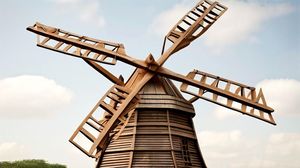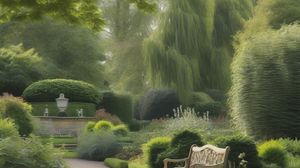
Wimbledon Common is one of the largest areas of common land in London, offering an expansive natural retreat from the bustling city with its approximately 1,140 acres of woodlands, grasslands, and ponds. It serves as a perfect spot for hiking, birdwatching, or simply enjoying a peaceful day out in nature.
The Common holds a special place in local history, with roots stretching back to the Middle Ages. It has also been a site of historical significance during the English Civil War and has maintained its status as public land through the Wimbledon and Putney Commons Act of 1871, ensuring it remains available for all to enjoy.
Among the Common's more unusual residents are the Wombles, fictional creatures created by author Elisabeth Beresford, who are said to live there. These creatures are dedicated to tidying up and recycling, a charming nod to environmental care long before it was trendy.
Wimbledon Windmill stands as an iconic feature on the Common, housing a fascinating museum within. Built in 1817, the windmill offers insight into the history of milling and features displays about life in the area during the 19th century.
An interesting natural feature of Wimbledon Common is the presence of the London Clay, which geologists and enthusiasts may find intriguing as it dates back to the Eocene Epoch, providing a glimpse into a prehistoric era when London was a tropical swamp.
The Common is also noted for its diverse wildlife, home to species such as stag beetles and the protected skylarks. Its rich biodiversity makes it an important ecological site within urban London, appealing to nature lovers and conservationists alike.
Wimbledon Common is steeped in literary history and has inspired authors and artists over the years. One of the most famous tales associated with the Common is that of "The War of the Worlds" by H.G. Wells, in which it features prominently.

Making the Most of Your Visit:
Start your visit at the Wimbledon Windmill Museum if it's open. It's not only a nice bit of history but also a great way to understand the local area before you wander into it.
If you're into wildlife, make sure to bring binoculars. Wimbledon Common is home to some fascinating species, including birds and the elusive stag beetle. You'll appreciate close-up views of the protected skylarks that thrive here.
Try to avoid walking off the designated paths, especially in PS8 and P2 areas (Parkside), to preserve the rich biodiversity and protect the ground-nesting birds. Stick to the trails for a safer and ecologically friendly journey.
Stop by Queensmere—a serene and often overlooked pond that's absolutely lovely for a moment of peace. Pack a picnic or a good book; it's a perfect spot for some quiet time.
Look out for the occasional art installation or community event. The Common often hosts interesting activities, especially in summer. Keep an eye out for local posters or signs that might not be widely advertised.

Visiting Times & Costs:
Wimbledon Common is open to the public year-round and does not have any entrance fee, making it a perfect destination for a leisurely day out at no cost.
While the outdoor areas of the Common are accessible at any time, do note that the Wimbledon Windmill Museum has specific opening hours. It typically opens on weekends and public holidays from March to October, subject to weather conditions.
The Common has some accessibility challenges due to its natural terrain. Visitors should be aware that paths can be uneven and muddy, particularly during wet weather, which may pose difficulties for those with mobility impairments. However, there are firmer paths more suitable for wheelchair users or those with restricted mobility.

Address & Map:

Nearby:















